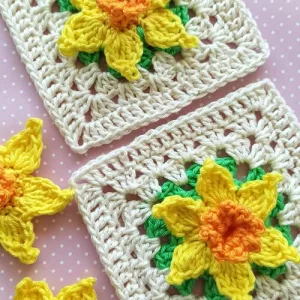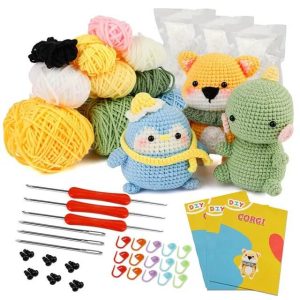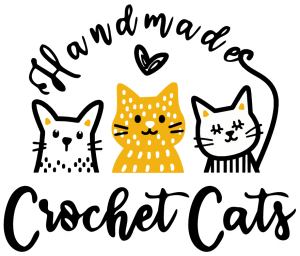The Ultimate Guide to Single Crochet: Mastering the Basics for Every Crochet Project
Table of Contents
- What is Single Crochet?: A basic crochet stitch that’s easy for beginners.
- Benefits of Single Crochet: Versatile and can be used in various projects.
- Essential Materials: Yarn types and hook sizes for single crochet.
- Basic Techniques: Step-by-step instructions for mastering single crochet.
- Common Mistakes: Tips on what to avoid while crocheting.
- Patterns and Projects: Ideas for items you can create with single crochet.
- Frequently Asked Questions (FAQs): Answers to common queries about single crochet.

What is Single Crochet?
Single crochet (abbreviated as sc) is one of the most fundamental stitches in the crochet world. It is characterized by its simple structure and results in a tight, dense fabric. This stitch serves as the foundation for many crochet patterns, making it an essential skill for beginners and a versatile tool for experienced crocheters alike.
When learning to crochet, mastering the single crochet stitch opens the door to a plethora of projects. Its simplicity and adaptability allow crafters to create everything from home décor to wearable items.

How to Make a Single Crochet:
Step-by-Step Guide
Mastering single crochet involves practicing a few simple steps. Here’s a detailed breakdown of the process:
Start with a Slip Knot: Begin by creating a slip knot on your hook. This knot serves as the foundation for your crochet project.
Chain Stitch (ch): To start, make a foundation chain. For example, chain 10 (or as many as your pattern requires). The chain will serve as the base for your single crochet stitches.
Insert Hook: Insert your hook into the second chain from the hook. This is where your first single crochet stitch will be placed.
Yarn Over: Yarn over by wrapping the yarn around the hook.
Pull Through: Pull the yarn through the chain. You should now have two loops on your hook.
Yarn Over Again: Yarn over once more and pull through both loops on your hook. Congratulations! You’ve just completed your first single crochet stitch.

Continue the Row: Repeat steps 3-6 until you reach the end of the row. At the end of the row, chain 1 to turn for the next row.

Practice: Continue practicing until you’re comfortable with the stitch. The more you practice, the more confident you’ll become!
Materials You’ll Need
To get started with the slip knot crochet stitch, here are the essential materials:
- Yarn: Choose yarn that fits your project. Medium-weight yarn, such as worsted or DK, is beginner-friendly.
- Crochet Hook: The right hook size depends on the yarn. For most medium-weight yarns, a 5 mm or 6 mm hook is ideal. Keep various sizes on hand, as hook size affects the slip knot tension.
- Scissors: A pair of small scissors for trimming yarn at the end of projects is a must-have.
- Tapestry Needle: Used for weaving in loose ends, yarn needles are especially helpful for finishing projects.
- Stitch markers: Stitch markers can help beginners keep track of rows or rounds, especially useful when practicing new techniques.

Common Mistakes to Avoid
As with any craft, there are common pitfalls that beginners often encounter when learning single crochet. Here are some mistakes to avoid:
Too Tight or Too Loose: Finding a balance in your tension is crucial for even stitches. If your stitches are too tight, it may be difficult to insert your hook in the following rows. Conversely, if they’re too loose, your fabric may become floppy.
Forgetting to Chain at the End of Rows: Always remember to chain 1 at the end of each row to maintain the correct height. Skipping this step can lead to uneven edges.
Counting Stitches Incorrectly: Count your stitches regularly to ensure your piece remains the correct size. Miscounting can lead to an imbalanced project.
Using the Wrong Hook Size: Make sure to choose a crochet hook that is appropriate for your yarn weight. Using the wrong size can affect the tension and appearance of your project.
Not Paying Attention to Gauge: Always check the gauge if your pattern specifies one. This will help ensure that your finished piece matches the intended size.
-
Sale!

Daffodil Crochet Garland Pattern
£5.50Original price was: £5.50.£4.50Current price is: £4.50. Add to basket -
Sale!

Daffodil Crochet Granny Square
£5.50Original price was: £5.50.£4.50Current price is: £4.50. Add to basket -
Sale!

Full Of Heart Single Crochet Blanket Pattern
£5.50Original price was: £5.50.£4.50Current price is: £4.50. Add to basket -
Sale!

Heart Granny Square
£3.50Original price was: £3.50.£2.50Current price is: £2.50. Add to basket
Patterns and Projects Using Single Crochet
Beginner-Friendly Projects
Once you’ve mastered single crochet, you can put your skills to use with various projects. Here are some beginner-friendly ideas:
Dishcloths: Quick and practical; perfect for practicing your single crochet. These make great gifts and are always handy in the kitchen.
Scarves: A simple rectangular scarf is a great way to learn. Use a soft yarn for a cozy accessory that can keep you warm.
Amigurumi: Single crochet is ideal for creating stuffed animals and figures. The tight fabric ensures that stuffing doesn’t peek through, making your creations look polished.
Intermediate Projects
As you gain confidence in your skills, consider tackling intermediate projects that utilize single crochet:
Blankets: A lap blanket or baby blanket can be made using the single crochet stitch. Experiment with different colors and patterns for a unique design.
Hats: A cozy beanie can be crafted using single crochet. You can play with various stitches and textures to add interest to your hat.
Bags: Use single crochet to create a simple tote bag. Add a lining and handles for a practical and stylish accessory.
Advanced Projects
For those looking to challenge themselves, single crochet can also be incorporated into advanced projects:
Garments: Single crochet can be used for various garment patterns like cardigans and tops. The tight fabric provides structure and support, making it suitable for clothing.
Decorative Items: Use single crochet for coasters, baskets, or decorative pillows. You can incorporate colors and patterns to match your home décor.

Exploring Advanced Techniques
Once you’re comfortable with the basic single crochet stitch, you can explore advanced techniques to enhance your skills:
Changing Colors: Learn how to switch yarn colors mid-project to create stripes or patterns. This adds visual interest to your work.
Working in the Round: Mastering the technique of working in the round with single crochet opens up opportunities for making hats, bags, and other circular items.
Combining Stitches: Incorporate other stitches into your single crochet projects to create texture and complexity. For example, combining single crochet with double crochet can yield beautiful results.

Frequently Asked Questions (FAQ)
1. What is the difference between single crochet and double crochet?
Single crochet creates a tighter, denser fabric compared to double crochet, which is taller and looser. The main difference lies in the number of yarn overs and the way the stitches are constructed. In double crochet, you yarn over twice before inserting the hook, resulting in a taller stitch.
2. How do I fix mistakes in single crochet?
To fix mistakes, you can either frog (rip back) to the point of the mistake or use a yarn needle to weave in the ends. For larger mistakes, it may be best to undo several rows and rework them.
3. Can I use single crochet for garments?
Yes, single crochet can be used for garments, although it may result in a heavier fabric. Many patterns incorporate single crochet into their designs for added structure.
4. What is the best yarn for single crochet projects?
Medium-weight yarn, such as worsted weight, is often the best choice for single crochet. However, you can experiment with different weights to see what works for your project.
5. How long does it take to learn single crochet?
The time it takes to learn single crochet varies by individual. Most beginners can learn the basics within a few hours of practice. However, becoming proficient may take days or weeks, depending on your dedication.
6. Can I use single crochet to create lace?
While single crochet can be used in lace projects, it’s generally combined with other stitches to create openwork designs. Consider experimenting with combinations to achieve lace effects.
7. How do I maintain my single crochet projects?
To keep your single crochet items looking great, wash them according to the yarn label instructions. Store items in a cool, dry place away from direct sunlight to prevent fading.
Conclusion
Single crochet is an essential stitch in the world of crochet. With its ease of learning, versatility, and wide range of applications, it’s a must-know technique for any crocheter. By practicing the techniques outlined in this guide and exploring different patterns, you’ll soon be able to create beautiful projects with single crochet.
Whether you’re crafting home décor, gifts, or garments, single crochet provides the foundation for countless creative possibilities. Embrace the art of single crochet, and you’ll unlock your creative potential!
By following this guide, you’ll be on your way to mastering single crochet. With practice and attention to detail, this foundational technique will soon become second nature, enabling you to tackle more complex projects with confidence!
Crochet Patterns
-
Sale!

Daffodil Crochet Garland Pattern
£5.50Original price was: £5.50.£4.50Current price is: £4.50. Add to basket -
Sale!

Daffodil Crochet Granny Square
£5.50Original price was: £5.50.£4.50Current price is: £4.50. Add to basket -
Sale!

Full Of Heart Single Crochet Blanket Pattern
£5.50Original price was: £5.50.£4.50Current price is: £4.50. Add to basket -
Sale!

Heart Granny Square
£3.50Original price was: £3.50.£2.50Current price is: £2.50. Add to basket
Accessories
-

10 x Golden Touch Crochet Hook Set, 2-6.5mm
£19.00 Add to basket -

10 x Rainbow Bliss Crochet Hook Set, 2-6.5mm
£19.00 Add to basket -

14 x ColorSplash Crochet Hook Set With Case, 2.25-10mm
£24.00 Add to basket -

3x Amigurumi Crochet Kit – Fox, Elephant, Dinosaur
£15.00 Add to basket -

3x Amigurumi Crochet Kit – Penguin, Teddy, Dinosaur
£15.00 Add to basket -

5 x BlossomCraft Floral Crochet Hook Set, 6.5mm-7mm-8mm-9mm-10mm
£14.00 Add to basket -

8 x Fox Lightweight Crochet Hook Set, 2.5-6mm
£18.00 Select options This product has multiple variants. The options may be chosen on the product page -

9 x Beautiful Mermaid Crochet Hook Set, 2.25-6.5mm
£18.00 Add to basket































